#Utility emergency response software
Explore tagged Tumblr posts
Text
#Workforce management#Workforce management software#Workforce management solutions#Field workforce management#Workforce scheduling software#Emergency response solutions#Utility emergency response software#Operational efficiency software#Workflow management software#Utilities Operations analytics#Operational analytics software
1 note
·
View note
Text
There are just two cables linking the remote Arctic archipelago of Svalbard with mainland Norway, providing almost all the data from polar-orbiting satellites to the rest of the world. And two years ago, they nearly stopped working.
Norwegian police images released in late May show the catastrophic damage done to one of the Svalbard fiber optic cables: the plastic casing slashed open, the cable exposed, and wires unfurled like a faulty electrical cord.
The unsolved January 2022 incident, which cut data flow from the SvalSat satellites and limited air traffic to the archipelago, is serving as a cautionary tale about what can happen when undersea cables—which underpin most of the global communications network—are cut. Yemen’s Iran-backed Houthi rebels did just that earlier this year when they targeted a key bottleneck between Asia, Africa, and Europe—after threatening to do so in response to Israel’s war against Hamas in Gaza.
The threat is not just limited to one or two areas. NATO officials believe that Russia has a decadeslong program to map out European undersea infrastructure as part of an effort to prepare the battlefield for a possible conflict with the 32-nation alliance.
“We know the potential is there to do damage if they would want to,” said a senior NATO official, speaking with Foreign Policy on condition of anonymity based on ground rules for interacting with journalists set by the alliance. “Part of Russian war planning is knowing where the critical infrastructure of your enemy is.”
It doesn’t take a huge effort by the Russians to get the information that they need to cause harm. Most of the pipelines are run by utility companies, and much of the data on where the cables run is in the public domain because of licensing requirements.
In response, NATO now has an undersea infrastructure coordination group that brings together military and civilian officials and has the power to convene top representatives from the private sector, based out of the alliance’s Maritime Command in the London suburb of Northwood.
“The question is connecting all the dots and creating a network,” the senior NATO official said of the information and intelligence exchange.
The ambitious effort is an attempt to use computing power to protect the vast undersea cable network that undergirds much of the global economy. Since it’s nearly impossible to patrol undersea all the time without an unrealistic number of submarines—especially across the Atlantic Ocean—the alliance has to rely on computers. Drawing on data from software interfaces and the cable and pipeline operators themselves, NATO allies are working together with the private sector to create a massive alert system for the thousands of miles of undersea infrastructure in Northern Europe, relying on sensors from the cables as well as acoustic sensors attached to wind turbines, which can be used to detect irregularities.
“NATO processes, I think, are sort of in a very early phase,” said Audun Halvorsen, the director of the emergency department for the Norwegian Shipowners’ Association (and formerly the country’s deputy foreign minister). “They are basically trying to map out the landscape when it comes to jurisdictions, when it comes to authorities involved. You are facing a huge range of different regulatory regimes for the industry around the undersea basin.”
The strategy of cutting undersea cables is almost as old as modern warfare. (The first trans-Atlantic cables had been laid a few decades earlier, in 1866.) Britain began cutting German undersea cables at the outset of World War I to sabotage communications—and the Germans happily returned the favor. When submarine telephone cables began being laid in the 1950s, during the early days of the Cold War, Soviet trawlers damaged underwater cables near the Newfoundland coast. The U.S. Navy alone owns more than 40,000 nautical miles of active cables on the seafloor.
But with fiber optic cables becoming the ubiquitous plumbing that underpins global communications and trade in the internet age, the vulnerability in the seabed is growing. Norway’s undersea pipeline network provides about 40 percent of Europe’s natural gas supply, with pipelines crisscrossing the North Sea to the United Kingdom and the rest of the continent along with about 500 underwater communication cables that carry roughly 97 percent of the world’s internet traffic—some of them extending all the way across the Atlantic Ocean. That’s as much as $10 trillion in financial transactions every day.
“It is less kinetic and more a way for the Russians to show the West that ‘we know you guys are quite challenged in securing that infrastructure,’” said Sebastian Bruns, a naval expert at the Center for Maritime Strategy and Security at the Institute for Security Policy at Kiel University in Germany. “They would be tackling the very seams of what ties our societies together.”
About 100 of those cables break globally every year—most by accident—and it’s basically impossible to protect all of that infrastructure, other than by adding even more redundant data cables or ensuring that more liquified natural gas tankers are waiting out at sea, providing another source of gas if there’s a break.
The concern for that infrastructure has led to the NATO effort, which began after the September 2022 attacks on the Nord Stream 1 and 2 pipelines that transport natural gas from Russia to Germany. Even though much of the data about where the cables are located is public, the sensor data that could determine whether a linkage is in danger of being cut is stovepiped far under the national level—meaning that it’s kept within the companies themselves. The United States alone has 85 licensed undersea telecommunications landing stations. And while many pipeline owners have taken into account the risk of corrosion and possible accidents, factoring for sabotage is less common.
Some experts believe that smaller groups of countries can move faster than NATO to protect the cables. In April, Norway and five other countries bordering the North Sea—Belgium, Denmark, the Netherlands, Germany, and the United Kingdom—agreed to share operational information to protect undersea cables and pipelines against sabotage. And the Council of the Baltic States recently met in Finland to condemn Russia’s hybrid tactics—incidents of sabotage that fall beneath the level of declared war, including threats to undersea cables.
Already, Russia is lashing out at Nordic countries through other means. Since Finland joined NATO in April 2023, Russia has been sending waves of forced migrants to their 830-mile-long shared border—nearly half of the entire boundary between Russia and the alliance—forcing Helsinki to shut down all of its crossings. Russia has proposed redrawing borders in the Baltic Sea, hit Sweden with cyberattacks, and even removed buoys on the Narva River that Estonia put in place to mark their maritime frontier.
“All of our economy under the sea is under threat,” Vice-Adm. Didier Maleterre, the deputy commander of the NATO maritime command, said in April.
The threat is heightened by a Russian submarine program that has resurged since the 2022 invasion of Ukraine, operating from the Kola Peninsula. But problems can also be caused by unintended anchor drag from commercial ships. The Hong Kong-flagged and Chinese-operated NewNew Polar Bear, suspected of damaging the Balticconnector gas pipeline between Finland and Estonia in October 2023, sailed away along the Northern Sea route with protection from a Russian icebreaker.
In the face of all the other challenges—shrinking navies, a resurgence in piracy, the Red Sea attacks—that undersea flank is exposed.
And officials say that Russia’s use of criminal and civilian networks—which are also deployed to create influence networks in mainland Europe—makes all of these tactics, including the sabotage of undersea pipelines, extremely difficult to pin on the Kremlin. The Russian surveys of the Baltic seabed, for instance, are carried out by ships with an ostensibly scientific purpose.
“We are still tied into this military-versus-civilian division of labor, whereas the Russians are much smarter using civilian vessels for military purposes,” said Bruns, the naval expert. “We are yet to find a solution for that.”
Scientists still understand relatively little about the form of the seafloor. So artificial intelligence is also being used to map it, providing another potential method to spot would-be Russian cable snappers. Some NATO countries and operators are even thinking about burying their pipelines in the seafloor, especially in the Baltic Sea, where the average depth is just under 200 feet. It’s already standard practice near most European coastlines, since it helps protect against bottom trawlers and ship anchors.
After the Balticconnector pipeline incident last fall, Norway began to do an inventory of its own undersea infrastructure, starting with oil and gas before branching out to map parts of the electrical grid and communications cables that ran underwater. Authorities were able to search nearly 5,600 miles of oil and gas pipelines.
“We searched everything,” said Gen. Eirik Kristoffersen, Norway’s chief of defense. “When we found something, we used our military experts to look [at], ‘what is this? Is this something that has been placed there? Is this something from World War II? Is it something that the fishermen dropped?’”
The ability to conduct such an extensive search stems from the infrastructure of the private sector. Norway’s energy industry already has preparedness mechanisms in place to help protect and repair undersea infrastructure for pipelines and electric cables, Halvorsen said, which is coordinated by Norwegian operator Equinor. It’s a model that Halvorsen believes has promise for communication cables, too. But across most of NATO, that capability is limited.
“There is basically zero capability in government hands to survey, repair, maintain, [or] replace any of this infrastructure,” Halvorsen said. “All that capability and capacity is for the civilian industry. So to protect this kind of underwater infrastructure, you need to have some kind of functioning interface between the government side … and the industry.”
6 notes
·
View notes
Text
GIS In Our Daily Lives
The involvement of Geographic Information Systems (GIS) in our daily lives is pervasive, influencing and enhancing various aspects across different sectors. The integration of GIS into everyday activities has become integral for decision-making, planning, and optimizing resources. GIS helps city planners and transportation experts to provide them with information like maps, satellite pictures, population statistics, and infrastructure data. GIS helps them make better decisions when designing cities and transportation systems that are sustainable and good for the environment.
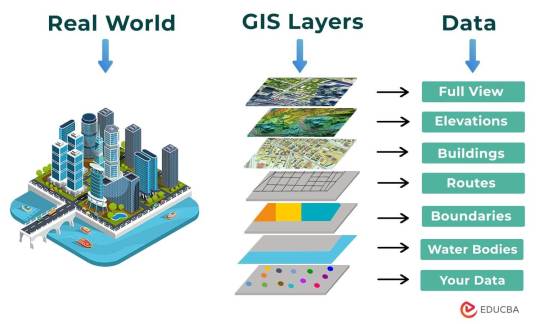
The following points elucidate the notable involvement of GIS in our daily lives:
Navigation and Location Services: GIS provides monitoring functions through the visual display of spatial data and precise geographical positioning of monitored vehicles, whereas GPS provides accurate, clear, and precise information on the position and navigation of a monitored or tracked vehicle in real-time and at the exact location.GIS is at the core of navigation applications and location-based services on smartphones. It enables accurate mapping, real-time navigation, and geolocation services, assisting individuals in finding locations, planning routes, and navigating unfamiliar areas.
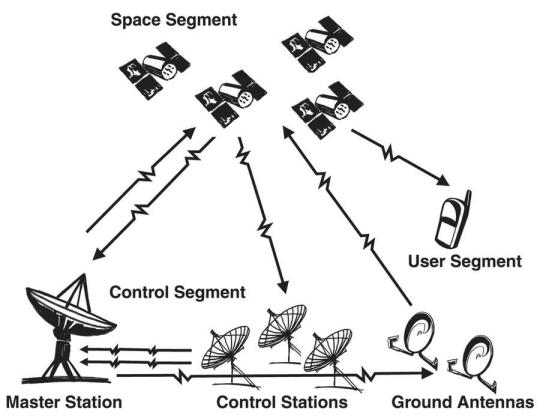
E-Commerce and Delivery Services: GIS software is a powerful tool for supply chain network planning. It helps determine the optimal location for distribution centers, warehouses, or other supply facilities. GIS is utilized in logistics and delivery services for optimizing routes, tracking shipments, and ensuring timely deliveries. E-commerce platforms leverage GIS to enhance the efficiency of their supply chain and last-mile delivery processes.

Weather Forecasting and Disaster Management: Many states are using GIS dashboard to monitor the rainfall across the state, on a real-time basis, from the data shared by rain sensors installed at various locationsGIS plays a crucial role in weather forecasting and disaster management. It assists meteorologists in analyzing spatial data, predicting weather patterns, and facilitating timely responses to natural disasters by mapping affected areas and coordinating emergency services.

Healthcare Planning and Disease Monitoring: Geographic Information Systems enable the visualization and monitoring of infectious diseases. Additionally GIS records and displays the necessary information that health care needs of the community as well as the available resources and materials. GIS supports public health initiatives by mapping the spread of diseases, analyzing healthcare resource distribution, and assisting in the planning of vaccination campaigns. It aids in identifying high-risk areas and optimizing healthcare service delivery.
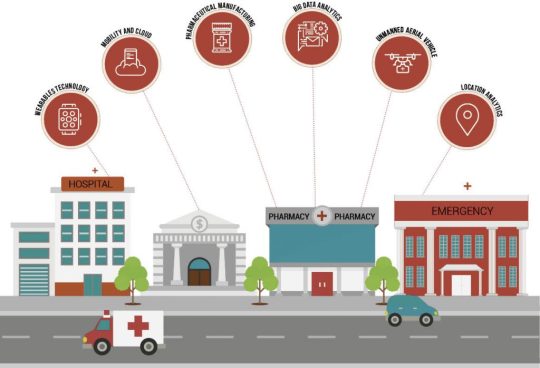
Social Media and Geo-tagging: GIS also helps in geotagging and other location related information in posts, it’s tools can map and visualize the spatial distribution of social media activity. This analysis can reveal trends, hotspots, and patterns in user engagement across different geographic areas. Many social media platforms incorporate GIS for geo-tagging, allowing users to share their location and experiences. This feature enhances social connectivity and facilitates the sharing of location-specific information.
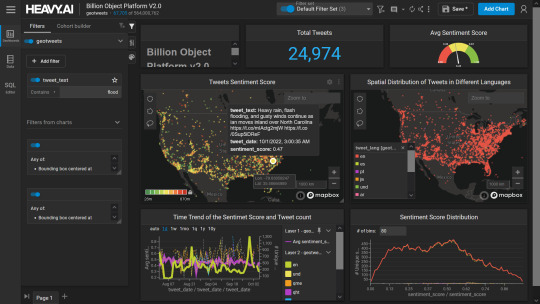
Smart City Initiatives: The Geographic Information System (GIS) offers advanced and user-friendly capabilities for Smart City projects and allows to capture, store and manipulate, analyze and visualize spatially referenced data. It is used for spatial analysis and modeling. It is the cornerstone of smart city planning, enabling the integration of data for efficient urban management. It supports initiatives related to traffic management, waste disposal, energy consumption, and overall infrastructure development.

Education and Research: GIS is increasingly utilized in education and research for visualizing and analyzing spatial data. It enables students and researchers to explore geographic relationships, conduct field studies, and enhance their understanding of various subjects.

Agricultural Management and Precision Farming: Farmers leverage GIS to optimize agricultural practices by analyzing soil conditions, crop health, and weather patterns. Precision farming techniques, facilitated by GIS, contribute to increased crop yields and sustainable farming practices.

Real Estate and Property Management: In the real estate sector, GIS aids in property mapping, land valuation, and site selection. It provides real estate professionals with valuable insights into spatial relationships, market trends, and optimal development opportunities.
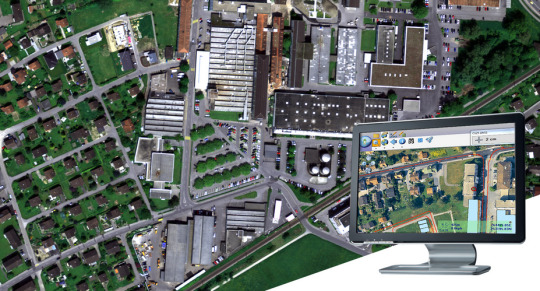
Tourism and Recreation: GIS enhances the tourism industry by providing interactive maps, route planning, and location-based information. It assists tourists in exploring destinations, finding attractions, and navigating efficiently.

The broad and varied involvement of GIS in our daily lives underscores its significance as a technology that not only facilitates geographic data analysis but also contributes to the efficiency, safety, and interconnectedness of modern society. As GIS applications continue to evolve, their impact on daily activities is expected to further expand and refine.
#gis#architectdesign#architecture#city#education#geographic information system(gis)#geographical indication
13 notes
·
View notes
Text
What Future Trends in Software Engineering Can Be Shaped by C++
The direction of innovation and advancement in the broad field of software engineering is greatly impacted by programming languages. C++ is a well-known programming language that is very efficient, versatile, and has excellent performance. In terms of the future, C++ will have a significant influence on software engineering, setting trends and encouraging innovation in a variety of fields.
In this blog, we'll look at three key areas where the shift to a dynamic future could be led by C++ developers.
1. High-Performance Computing (HPC) & Parallel Processing
Driving Scalability with Multithreading
Within high-performance computing (HPC), where managing large datasets and executing intricate algorithms in real time are critical tasks, C++ is still an essential tool. The fact that C++ supports multithreading and parallelism is becoming more and more important as parallel processing-oriented designs, like multicore CPUs and GPUs, become more commonplace.
Multithreading with C++
At the core of C++ lies robust support for multithreading, empowering developers to harness the full potential of modern hardware architectures. C++ developers adept in crafting multithreaded applications can architect scalable systems capable of efficiently tackling computationally intensive tasks.

C++ Empowering HPC Solutions
Developers may redefine efficiency and performance benchmarks in a variety of disciplines, from AI inference to financial modeling, by forging HPC solutions with C++ as their toolkit. Through the exploitation of C++'s low-level control and optimization tools, engineers are able to optimize hardware consumption and algorithmic efficiency while pushing the limits of processing capacity.
2. Embedded Systems & IoT
Real-Time Responsiveness Enabled
An ability to evaluate data and perform operations with low latency is required due to the widespread use of embedded systems, particularly in the quickly developing Internet of Things (IoT). With its special combination of system-level control, portability, and performance, C++ becomes the language of choice.
C++ for Embedded Development
C++ is well known for its near-to-hardware capabilities and effective memory management, which enable developers to create firmware and software that meet the demanding requirements of environments with limited resources and real-time responsiveness. C++ guarantees efficiency and dependability at all levels, whether powering autonomous cars or smart devices.
Securing IoT with C++
In the intricate web of IoT ecosystems, security is paramount. C++ emerges as a robust option, boasting strong type checking and emphasis on memory protection. By leveraging C++'s features, developers can fortify IoT devices against potential vulnerabilities, ensuring the integrity and safety of connected systems.
3. Gaming & VR Development
Pushing Immersive Experience Boundaries
In the dynamic domains of game development and virtual reality (VR), where performance and realism reign supreme, C++ remains the cornerstone. With its unparalleled speed and efficiency, C++ empowers developers to craft immersive worlds and captivating experiences that redefine the boundaries of reality.
Redefining VR Realities with C++
When it comes to virtual reality, where user immersion is crucial, C++ is essential for producing smooth experiences that take users to other worlds. The effectiveness of C++ is crucial for preserving high frame rates and preventing motion sickness, guaranteeing users a fluid and engaging VR experience across a range of applications.

C++ in Gaming Engines
C++ is used by top game engines like Unreal Engine and Unity because of its speed and versatility, which lets programmers build visually amazing graphics and seamless gameplay. Game developers can achieve previously unattainable levels of inventiveness and produce gaming experiences that are unmatched by utilizing C++'s capabilities.
Conclusion
In conclusion, there is no denying C++'s ongoing significance as we go forward in the field of software engineering. C++ is the trend-setter and innovator in a variety of fields, including embedded devices, game development, and high-performance computing. C++ engineers emerge as the vanguards of technological growth, creating a world where possibilities are endless and invention has no boundaries because of its unmatched combination of performance, versatility, and control.
FAQs about Future Trends in Software Engineering Shaped by C++
How does C++ contribute to future trends in software engineering?
C++ remains foundational in software development, influencing trends like high-performance computing, game development, and system programming due to its efficiency and versatility.
Is C++ still relevant in modern software engineering practices?
Absolutely! C++ continues to be a cornerstone language, powering critical systems, frameworks, and applications across various industries, ensuring robustness and performance.
What advancements can we expect in C++ to shape future software engineering trends?
Future C++ developments may focus on enhancing parallel computing capabilities, improving interoperability with other languages, and optimizing for emerging hardware architectures, paving the way for cutting-edge software innovations.
9 notes
·
View notes
Text
The Impact of AI Software on Business: Enhancing Efficiency with AI Business Tools
In today's fast-paced digital landscape, businesses are continuously seeking innovative solutions to enhance productivity and streamline operations. AI software for business and AI business tools have emerged as transformative technologies, enabling organizations to harness the power of artificial intelligence to improve efficiency, decision-making, and customer satisfaction. This article explores the benefits, applications, and best practices of integrating AI software into your business strategy.
Understanding AI Software for Business
AI software for business encompasses a wide range of applications and tools designed to perform tasks that typically require human intelligence. These can include natural language processing (NLP), machine learning (ML), computer vision, and robotic process automation (RPA). By leveraging these technologies, businesses can automate routine tasks, analyze large datasets, and gain insights that drive strategic decision-making.
Benefits of AI Software
Increased Efficiency: One of the primary advantages of AI software is its ability to automate repetitive tasks. For example, businesses can use AI-powered chatbots to handle customer inquiries, allowing human agents to focus on more complex issues.
Data Analysis and Insights: AI tools can analyze vast amounts of data quickly, providing valuable insights that help businesses make informed decisions. This capability is particularly beneficial in areas such as market research, customer behavior analysis, and financial forecasting.
Enhanced Customer Experience: AI software can personalize customer interactions by analyzing user behavior and preferences. For instance, AI can recommend products based on past purchases, improving customer satisfaction and loyalty.
Cost Savings: By automating tasks and improving operational efficiency, businesses can significantly reduce labor costs. AI tools can help identify inefficiencies and areas for improvement, leading to further cost reductions.
Scalability: AI business tools can easily scale with a company’s growth. As a business expands, AI solutions can adapt to increasing data volumes and more complex operational needs without requiring a complete overhaul.
Key Applications of AI Business Tools
AI business tools can be integrated into various business functions, enhancing productivity and effectiveness. Here are some key applications:
1. Marketing Automation
AI software can analyze customer data to optimize marketing campaigns. Tools like predictive analytics can forecast customer behavior, allowing businesses to tailor their marketing strategies for better engagement. Moreover, AI can automate social media posting and email marketing, ensuring timely communication with minimal effort.
2. Customer Service
AI-powered chatbots are revolutionizing customer service by providing instant responses to customer inquiries. These bots can handle multiple requests simultaneously, improving response times and reducing wait times for customers. Additionally, AI can analyze customer interactions to identify common issues and suggest improvements to service processes.
3. Sales Optimization
AI business tools can streamline the sales process by providing insights into customer behavior and preferences. Sales teams can utilize AI for lead scoring, identifying high-potential leads based on historical data. This targeted approach helps sales representatives prioritize their efforts, increasing conversion rates.
4. Human Resources Management
AI software can transform human resources processes by automating tasks such as resume screening and employee onboarding. AI tools can analyze candidate profiles, helping HR professionals identify the best-fit candidates quickly. Furthermore, AI can monitor employee performance and engagement, enabling proactive measures to enhance workplace satisfaction.
5. Supply Chain Management
In supply chain management, AI can optimize inventory management, demand forecasting, and logistics. AI algorithms analyze historical data and market trends to predict demand, helping businesses maintain optimal inventory levels. This reduces carrying costs and minimizes the risk of stockouts or overstocking.
Best Practices for Implementing AI Software
While integrating AI software into your business can yield significant benefits, it’s essential to approach implementation strategically. Here are some best practices:
1. Define Clear Objectives
Before adopting AI software, clearly define your business objectives. Identify the specific problems you aim to solve or the processes you wish to improve. This clarity will guide your selection of AI tools and help measure their impact.
2. Start Small
Begin with small-scale AI projects to test their effectiveness before rolling them out on a larger scale. This approach allows you to evaluate the software’s performance, identify potential challenges, and make necessary adjustments.
3. Invest in Training
Providing training for your team is crucial to ensure successful adoption. Employees should understand how to use AI tools effectively and be aware of the benefits they bring. Ongoing training will also help them adapt to new features and updates.
4. Monitor Performance
Continuously monitor the performance of AI software to assess its impact on your business. Collect data on key performance indicators (KPIs) related to the areas you aim to improve. Regular evaluations will help you refine your AI strategy and make informed decisions about future investments.
5. Prioritize Data Security
As AI software relies on data to function effectively, it’s essential to prioritize data security and privacy. Implement robust security measures to protect sensitive information and comply with relevant regulations. Ensure that your AI solutions follow best practices for data handling and storage.
Conclusion
Incorporating AI software for business and AI business tools can significantly enhance operational efficiency and drive growth. By automating tasks, providing valuable insights, and improving customer interactions, businesses can stay competitive in an ever-evolving market. As you explore the potential of AI, remember to approach implementation thoughtfully, keeping in mind the specific needs and objectives of your organization. With the right strategy, AI can be a game-changer for your business, paving the way for increased productivity and success.
3 notes
·
View notes
Text
The Rise of 3D Printing in Prosthetics and Orthotics Market

The global prosthetics and orthotics market plays a vital role in improving quality of life for millions worldwide. Worth an estimated $7.2 billion in 2024, the market facilitates mobility for those with limb differences or injuries through highly customized external limb replacements and braces. The market introduces prosthetics and orthotics—Medical devices that enhance or assist impaired body parts and mobility. Orthotics are braces or supports for joints, spine, and limbs; prosthetics externally replace missing limbs. Together they improve functionality and quality of life for users. Major players in the prosthetics and orthotics space utilizing advanced manufacturing include Ossur, Steeper Group, Blatchford, Fillauer, Ottobock, and WillowWood Global. These industry leaders increasingly deploy cutting-edge 3D printing and customized design software to produce state-of-the-art prosthetics and braces. Current trends in the prosthetics and orthotics market include growing utilization of 3D printing and advanced manufacturing techniques. 3D printing enables on-demand production of complex, customized devices. It reduces manufacturing costs and wait times while improving fit and comfort. Expanding material options also allow more lifelike prosthetics. As technology evolves, the market is positioned for continued growth through 2031 in facilitating mobility worldwide. Future Outlook The prosthetics and orthotics market is expected to witness significant advancements in the coming years. Manufacturers are constantly focusing on developing innovative technologies such as 3D printed prosthetics that provide a better fit, enhanced comfort, and unrestricted movement. There is also a rising trend of using lightweight, highly durable and comfortable materials like carbon fiber and thermoplastics to manufacture prosthetic devices. Advancements in myoelectric prosthetics with touch and motion sensors are making them more dexterous and responsive. Using pattern recognition and machine learning techniques, next-gen prosthetics could gain functionality approaching that of natural limbs.
PEST Analysis Political: Regulations regarding clinical trials and approvals of new prosthetic technologies may affect market growth. Favorable reimbursement policies for prosthetic devices can boost adoption. Economic: Rising disposable incomes allow more individuals to opt for higher-end prosthetics. Emerging markets present abundant opportunities for growth. Inflation and economic slowdowns can hinder market profitability. Social: Increasing incidence of amputations and disabilities due to aging population, accidents, war injuries etc. drive market demand. Growing awareness regarding prosthetics and orthotics aids adoption. Stigma associated with limb loss poses challenges. Technological: Advancements in materials, manufacturing techniques like 3D printing, sensors, computing power and battery technologies are enhancing functionality and usability of prosthetics/orthotics. Myoelectric and robotic prosthetics have vastly improved in recent years. Opportunity Rising aging population presents a huge opportunity for prosthetics and orthotics targeting mobility issues and disabilities. Over 630,000 amputations occur annually in the U.S. due to dysvascular conditions like diabetes, presenting a sizable patient pool. Expanding applications of prosthetics and orthotics beyond mobility impairment into sports and military could drive significant growth. Growing incidence of trauma and injuries globally increases the number of patients relying on these devices. Emerging markets like Asia Pacific and Latin America offer immense opportunities owing to increasing disposable incomes, expanding healthcare infrastructure and rising medical tourism. Technological advancements are constantly improving functionality and usability of prosthetic devices, fueling adoption rates. The lightweight, durable and comfortable characteristics of newer materials expand addressable indications and patient acceptance. Key Takeaways Growing demand from aging population: The rapid increase in aging population worldwide who are prone to mobility issues, disabilities and chronic diseases like diabetes is a key driver spurring sales of orthotic and prosthetic devices. Global expansion into emerging markets: Emerging markets like Asia Pacific, Latin America, Eastern Europe and the Middle East offer immense opportunities owing to their large population bases and improving healthcare penetration. Technological advancements: Constant R&D bringing advancements in areas such as 3D printing, lightweight materials,
4 notes
·
View notes
Text
Remote Jobs: Unlocking Global Talent and Flexibility
In an era defined by rapid technological advancement and shifting workplace paradigms, remote jobs have emerged as a transformative force, unlocking unparalleled access to global talent and fostering unparalleled flexibility. As more organizations embrace remote work, understanding its benefits and challenges is crucial for both employers and employees. This article delves into how remote jobs are reshaping the employment landscape, providing opportunities for businesses and workers alike.

The Rise of Remote Jobs
Remote jobs have surged in popularity over the past decade, driven by advances in digital communication tools and changing attitudes towards work-life balance. The COVID-19 pandemic accelerated this trend, forcing businesses worldwide to adapt to remote working models. What initially began as a temporary solution has now become a permanent fixture in many organizations.
Benefits of Remote Jobs
Access to Global Talent: One of the most significant advantages of remote jobs is the ability to tap into a global talent pool. Companies are no longer restricted by geographical boundaries when hiring, allowing them to find the best candidates regardless of location. This access to diverse perspectives and skills can drive innovation and competitiveness.
Increased Flexibility: Remote jobs offer unparalleled flexibility for employees, enabling them to design work schedules that fit their personal lives. This flexibility can lead to improved job satisfaction, higher productivity, and better work-life balance. For parents, caregivers, and individuals with disabilities, remote jobs can provide the opportunity to maintain a fulfilling career without compromising personal responsibilities.
Cost Savings: Both employers and employees can benefit financially from remote jobs. Employers save on overhead costs such as office space, utilities, and commuting allowances. Employees save on travel expenses and time, reducing the stress and cost associated with daily commutes.
Environmental Impact: It contribute to environmental sustainability by reducing the carbon footprint associated with commuting. Fewer cars on the road mean lower greenhouse gas emissions, making remote work an eco-friendly option.
Challenges of Remote Jobs
Communication Barriers: Despite advancements in communication technology, it can sometimes hinder effective communication and collaboration. Misunderstandings and delays can occur when team members are spread across different time zones and rely on digital communication tools.
Isolation and Mental Health: Working remotely can lead to feelings of isolation and loneliness, as employees miss out on the social interactions that occur in traditional office settings. This lack of social engagement can affect mental health and overall well-being.
Maintaining Productivity: While remote jobs offer flexibility, they also require a high level of self-discipline and time management. Without the structure of a traditional office, some employees may struggle to stay focused and productive.
Data Security: With these jobs, ensuring data security becomes more complex. Companies must implement robust cybersecurity measures to protect sensitive information, especially when employees use personal devices and unsecured networks.
Strategies for Success in Remote Jobs
Effective Communication: To overcome communication barriers, organizations should invest in reliable communication tools and platforms. Regular video meetings, instant messaging, and collaborative software can facilitate seamless interaction among team members.
Fostering a Strong Company Culture: Maintaining a strong company culture is essential for remote teams. Employers should prioritize virtual team-building activities, recognize employee achievements, and create opportunities for social interaction to combat feelings of isolation.
Clear Expectations and Goals: Setting clear expectations and goals is crucial for maintaining productivity in remote jobs. Employers should provide detailed guidelines, set realistic deadlines, and use project management tools to track progress and ensure accountability.
Support and Training: Providing employees with the necessary support and training is vital for the success of remote jobs. This includes offering resources for mental health, providing training on remote work best practices, and ensuring employees have access to the technology and tools they need.
The Future of Remote Jobs
The future of remote jobs looks promising, with many companies planning to adopt hybrid models that combine remote and in-office work. This approach allows businesses to reap the benefits of remote work while maintaining some level of physical presence for collaboration and client interactions.
Moreover, the rise of this job is likely to influence urban planning and real estate markets. As more people work from home, there may be a shift in demand for residential properties in suburban and rural areas, as well as a reimagining of office spaces to accommodate hybrid work models.
In conclusion, remote jobs have revolutionized the way we work, unlocking access to global talent and offering unprecedented flexibility. While there are challenges to address, the benefits of remote work are compelling for both employers and employees. By embracing effective communication, fostering a strong company culture, and providing the necessary support and resources, organizations can successfully navigate the remote work landscape and thrive in this new era of work.
2 notes
·
View notes
Text
"VOGUE OF DIGITAL ADVANCEMENT: THE SIGNIFICANCE OF TECHNOLOGICAL EXISTENCE FOR TRAVELERS’ UNPRECEDENTED EXPERIENCE"
Modern tourism and hospitality businesses are significantly swayed by technology, and it is predicted that it will mold the future of the said industries. In the past years, there have been numerous trends that emerged because of the COVID-19 outburst that make tourism products and services still available as well as more convenient to be utilized and consumed by its potential clients and workers.
Thus, we can conclude that travel preferences and demand will be influenced by current demographic trends, which will also have an impact on the structure and operations of the constant sector as well as its ability to grow sustainably. In line with that, it is based on the fact that in the next few years, more trends will rise and pave the way for the aforementioned industries to become more prosperous.

One of the trends that exist is the Virtual Travel Experience, which has increased the market for entertainment since past years. However, some specialists in the tourism industry already knew it to be one of the most promising travel trends lend by technology. In line with that, it can allow the traveler to digitally get into the virtual surroundings of the place he or she is supposed to visit, whether it’s a hotel or even an attraction.

In addition, there’s a Contactless Booking and Payment that emerged, which means that tourism and hospitality facilities that provide seamless and contactless payment and reservation options will be the must-visit destinations for travelers who are still hesitant to use cash or card machines for payments and other transactions.

In line with the previous trend, here comes the Tech-Empowered Facilitators as a part of the recent trends. This type of trend has integrated itself into the tourism and hospitality industry with innovative products that allow its users to easily facilitate their travel needs with the utilization of their own technologies and the aid of sophisticated and smart software.

Other trends that emerged include travels concerning the environment, which are Sustainable Tourism as well as Active Ecotourism.
Sustainable Tourism, to simply say, as the government concerning the tourism industry and even foreign or local visitors become more aware of the recent pandemic as well as its destructing effects, they start to feel that people must act and choose sustainable travel options in order to reclaim the natural world and preserve it for succeeding generations. On the other hand, Active Ecotourism is another trend that has evolved in response to the need for more environmentally conscious and conscientious travel. Here, it summons people to unify their love of travel with direct involvement in conservation and community services.
In addition, in line with the current trends, there are possible immense opportunities for tourism and hospitality industry to become well-heeled together with the future trends. These trends include the Metaverse Travel (adaptation from VR travel but it provides more exceptional experience), Continuity of Bleisure, and the Increase of Digital Nomads.

For Metaverse Travels, the introduction of it will change the way of how people approach travel due the existence of some cases of pandemic. Even when the restrictions are lifted, the risk and concern that it posed to certain tourists has caused them to change their typical travel strategy. This trend will enable and provide individuals with safer travel options, as well as a less expensive method to explore. In the real world, this phenomenon may fill the tourism niche in the next generation.

Next future trend could be the Continuity of Bleisure where travelers are permitted to enjoy their exploration while working at the same time. In reality, this trend is projected to continue and companies must up to the challenge of leveraging this opportunity by providing convenient and comfortable facilities for both leisure and business travelers.

Lastly, the Increase of Digital Nomads, which is somehow linked to the aforementioned trend. In regards with the previous pandemic, it demonstrated that remote work was possible, paving the way for a new generation of workers to travel while working. By reeling remote workers, every tourism and hospitality firm is expanding into a new market segment that will become increasingly essential as a target group for their marketing efforts.
Disclaimer: No copyright infringement intended. I do not own the images in this post. They belong to their rightful owners.
2 notes
·
View notes
Text
Mastering the DevOps Landscape: A Comprehensive Exploration of Roles and Responsibilities
Embarking on a career in DevOps opens the door to a dynamic and collaborative experience centered around optimizing software development and delivery. This multifaceted role demands a unique blend of technical acumen and interpersonal skills. Let's delve into the intricate details that define the landscape of a DevOps position, exploring the diverse aspects that contribute to its dynamic nature.

1. The Synergy of Collaboration: At the core of DevOps lies a strong emphasis on collaboration. DevOps professionals navigate the intricacies of working closely with development, operations, and cross-functional teams, fostering effective communication and teamwork to ensure an efficient software development lifecycle.
2. Orchestrating End-to-End Excellence: DevOps practitioners shoulder the responsibility for the entire software delivery pipeline. From coding and testing to deployment and monitoring, they orchestrate a seamless and continuous workflow, responding promptly to changes and challenges, resulting in faster and more reliable software delivery.
3. The Automation Symphony and IaC Choreography: Automation takes center stage in DevOps practices. DevOps professionals automate repetitive tasks, enhancing efficiency and reliability. Infrastructure as Code (IaC) adds another layer, facilitating consistent and scalable infrastructure management and further streamlining the deployment process.
4. Unveiling the CI/CD Ballet: Continuous Integration (CI) and Continuous Deployment (CD) practices form the elegant dance of DevOps. This choreography emphasizes regular integration, testing, and automated deployment, effectively identifying and addressing issues in the early stages of development.
5. Monitoring and Analytics Spotlight: DevOps professionals shine a spotlight on monitoring and analytics, utilizing specialized tools to track applications and infrastructure. This data-driven approach enables proactive issue resolution and optimization, contributing to the overall health and efficiency of the system.

6. The Art of DevSecOps: Security is not a mere brushstroke; it's woven into the canvas of DevOps through the DevSecOps approach. Collaboration with security teams ensures that security measures are seamlessly integrated throughout the software development lifecycle, fortifying the system against vulnerabilities.
7. Navigating the Ever-Evolving Terrain: Adaptability is the compass guiding DevOps professionals through the ever-evolving landscape. Staying abreast of emerging technologies, industry best practices, and evolving methodologies is crucial for success in this dynamic environment.
8. Crafting Solutions with Precision: DevOps professionals are artisans in problem-solving. They skillfully troubleshoot issues, identify root causes, and implement solutions to enhance system reliability and performance, contributing to a resilient and robust software infrastructure.
9. On-Call Symphony: In some organizations, DevOps professionals play a role in an on-call rotation. This symphony involves addressing operational issues beyond regular working hours, underscoring the commitment to maintaining system stability and availability.
10. The Ongoing Learning Odyssey: DevOps is an ever-evolving journey of learning. DevOps professionals actively engage in ongoing skill development, participate in conferences, and connect with the broader DevOps community to stay at the forefront of the latest trends and innovations, ensuring they remain masters of their craft.
In essence, a DevOps role is a voyage into the heart of modern software development practices. With a harmonious blend of technical prowess, collaboration, and adaptability, DevOps professionals navigate the landscape, orchestrating excellence in the efficient and reliable delivery of cutting-edge software solutions.
3 notes
·
View notes
Text
Building a Successful Real Estate Company: 10 Essential Steps
In the ever-evolving landscape of the real estate industry, establishing and maintaining a successful real estate company requires strategic planning, dedication, and a keen understanding of market dynamics. Whether you're a seasoned professional or a budding entrepreneur, these ten key steps can guide you toward building a thriving real estate business.
1. Develop a Solid Business Plan
Every successful venture begins with a well-thought-out business plan. Clearly define your goals, target market, and unique selling propositions. A comprehensive plan will serve as your roadmap, helping you navigate the challenges and seize opportunities in the competitive real estate market.
2. Embrace Technology
In the digital age, leveraging technology is crucial for staying competitive. Invest in a robust online presence, utilizing social media, websites, and online platforms to showcase your listings. Explore innovative tools and software that streamline processes, enhance client experiences, and provide a competitive edge in the market.
3. Establish a Strong Online Presence
To stand out in the crowded real estate landscape, a strong online presence is essential. Ensure your website is user-friendly, optimized for search engines, and features high-quality images and content. Platforms like realestateforcheap.com can be valuable resources, offering insights and opportunities to boost your online visibility.
4. Build a Robust Network
Success in real estate is often about who you know. Cultivate relationships with other professionals in the industry, such as agents, brokers, contractors, and mortgage lenders. Attend networking events, join industry associations, and actively engage in both online and offline communities to expand your network.
5. Provide Exceptional Customer Service
Satisfied clients are more likely to refer your services and become repeat customers. Focus on delivering exceptional customer service by being responsive, transparent, and attentive to clients' needs. Building a positive reputation in the market can lead to increased referrals and long-term success.
6. Stay Informed About Market Trends
The real estate market is dynamic and influenced by various factors. Stay informed about market trends, economic indicators, and local developments. Regularly analyze data to make informed decisions, anticipate market changes, and position your company for success.
7. Invest in Professional Development
Continuous learning is key to staying relevant in the real estate industry. Invest in professional development opportunities, attend workshops, and obtain relevant certifications. A well-trained team is more equipped to navigate challenges, provide expert advice, and build trust with clients.
8. Diversify Your Services
To create a resilient business, consider diversifying your services. Explore opportunities in property management, real estate development, or investment consulting. Diversification not only mitigates risk but also opens up new revenue streams for your company.
9. Implement Effective Marketing Strategies
A successful real estate company needs to have a strong marketing strategy. Utilize a mix of online and offline marketing techniques to reach a wider audience. Platforms like realestateforcheap.com can serve as effective channels to promote your listings and connect with potential clients.
10. Adapt and Innovate
The real estate industry is dynamic, with trends and technologies constantly evolving. To stay ahead, be adaptable and open to innovation. Embrace new technologies, explore emerging markets, and continuously assess and refine your business strategies to ensure sustained success.
Building a successful real estate company requires a combination of strategic planning, innovation, and a commitment to excellence. By following these ten essential steps, you can position your company for long-term success in a competitive and ever-changing market. Explore opportunities on realestateforcheap.com to enhance your business and stay ahead of the curve.
5 notes
·
View notes
Text
Decoding Cybersecurity: Unveiling the Future of US Digital Forensics Excellence
What is the Size of US Digital forensics Industry?
US Digital forensics Market is expected to grow at a CAGR of ~% between 2022-2028 and is expected to reach ~USD Mn by 2028.
Escalating cyberattacks targeting individuals, organizations, and critical infrastructure underscore the need for robust digital forensics capabilities. The increasing frequency and sophistication of these attacks drive the demand for advanced tools and expertise to investigate and respond effectively.
Rapid technological advancements, including IoT, cloud computing, AI, and blockchain, introduce new avenues for cyber threats. Digital forensics services are crucial to understanding these emerging technologies' vulnerabilities and mitigating associated risks.
Furthermore, stricter data protection regulations and compliance mandates necessitate thorough digital evidence collection, preservation, and analysis.
Organizations across industries has invested in digital forensics to ensure adherence to legal requirements and regulatory frameworks.
Additionally Legal proceedings increasingly rely on digital evidence. Law enforcement, legal firms, and corporations require robust digital forensics services to gather, analyze, and present evidence in a court of law, driving market expansion.
Us Digital Forensics Market By Type
The US Digital forensics market is segmented by Computer Forensics, Network Forensics, Mobile Device forensics and Cloud forensics. Based on type, Computer Forensics type segment is emerged as the dominant segment in US Digital forensics market in 2022.
Computers are ubiquitous in modern society, utilized across industries, organizations, and households. As a result, a significant portion of digital evidence related to cybercrimes and incidents is generated from computer systems, driving the demand for specialized computer forensics expertise. Computers and their software environments evolve rapidly.
Us Digital Forensics Market By End User Application
US Digital forensics market is segmented by Government and Defence, BFSI, Telecom and IT, Retail, Healthcare and Other Government and Defence market is dominant in end user application segment in Digital forensics market in 2022.
Government and defense agencies handle highly sensitive information related to national security and intelligence. The increasing sophistication of cyber threats targeting these entities necessitates robust digital forensics capabilities to investigate and respond to cyber incidents effectively.
Government and defense entities are prime targets for cyberattacks due to their critical roles. Effective incident response through digital forensics helps in containing and mitigating cyber incidents swiftly, minimizing damage and preventing further breaches.
US Digital forensics by Region
The US Digital forensics market is segmented by Region into North, East, West, South. In 2022, the dominance region is East region in US Digital forensics market.
The East region has a dense population and a well-established digital infrastructure, making it a hotspot for cybercriminal activity. The higher frequency of cyber threats and incidents necessitates a strong emphasis on digital forensics to investigate and mitigate these risks effectively. Additionally, the East region often sees a proactive approach from regulatory and legal bodies, reinforcing the demand for digital forensics services to ensure compliance and assist in investigations. The proximity of key players in law enforcement, government agencies, legal firms, and corporate headquarters further fuels the need for robust digital forensics capabilities.
Download a Sample Report of US digital forensics Solution Market
Competition Scenario in US Digital forensics Market
The US digital forensics market is characterized by a competitive landscape with several key players competing for market share. Prominent companies offering a range of digital forensics solutions and services contribute to the market's dynamism.
The competitive landscape also includes smaller, specialized firms and start-ups that focus on niche areas of digital forensics, such as cloud forensics, memory forensics, and industrial control systems forensics.
The competition is further intensified by the continuous evolution of technology, leading to the emergence of new players and innovative solutions. As the demand for digital forensics continues to grow, companies in this market are likely to invest in research and development to stay ahead of the curve, leading to a consistently competitive environment.
What is the Expected Future Outlook for the Overall US Digital forensics Market?
Download a Custom Report of US digital forensics market Growth
The US Digital forensics market was valued at USD ~Million in 2022 and is anticipated to reach USD ~ Million by the end of 2028, witnessing a CAGR of ~% during the forecast period 2022- 2028.
The US digital forensics market is poised for robust expansion due to the ever-evolving cybersecurity landscape, technological advancements, and regulatory pressures. Organizations across industries will increasingly recognize the necessity of investing in digital forensics to safeguard their digital assets and ensure compliance.
As long as cyber threats continue to evolve, the demand for sophisticated digital forensic tools, services, and expertise will remain on an upward trajectory.
The US digital forensics market appears promising, characterized by a confluence of technological advancements, increasing cyber threats, and growing legal and regulatory requirements. As technology continues to evolve rapidly, so does the nature of cybercrimes, creating a persistent demand for digital forensics solutions and services.
Additionally, the escalating frequency and complexity of cyberattacks. As more critical operations and personal information are digitized, the potential attack surface expands, leading to a higher likelihood of security breaches. This dynamic compels organizations and law enforcement agencies to enhance their digital forensic capabilities to investigate, mitigate, and prevent cyber incidents effectively.
Furthermore, the rise of emerging technologies like the Internet of Things (IoT), artificial intelligence (AI), and blockchain presents both opportunities and challenges. These technologies bring new possibilities for efficiency and connectivity but also introduce novel avenues for cyber threats. Consequently, the demand for digital forensics services is expected to surge as organizations seek expertise in unraveling incidents involving these cutting-edge technologies.
The market is also likely to see increased adoption of cloud-based digital forensics solutions. As more data is stored and processed in the cloud, digital forensic providers will need to develop tools and methodologies to effectively gather evidence from virtual environments, remote servers, and distributed systems.
2 notes
·
View notes
Text

Nintendo sues Yuzu Switch Emulator
February 28th 2024 Gaming / Nintendo / Lawsuit
KOSAMA
| Writer and Recovering Anime Addict
Nintendo has initiated legal action against the creators of Yuzu, an open-source Nintendo Switch emulator, as revealed by a lawsuit filed in a Rhode Island court on Monday. The lawsuit, detailed across 41 pages, targets Tropic Haze, the entity behind Yuzu, with specific mention of an individual identified by the alias Bunnei, who spearheads Yuzu's development. The genesis of this lawsuit was initially reported by Stephen Totilo, a correspondent for Game File.
Yuzu, which emerged in 2018 shortly after the debut of the Nintendo Switch, is a freely available emulator crafted by the same developers responsible for Citra, a Nintendo 3DS emulator. Essentially, Yuzu functions as software enabling users to engage with Nintendo Switch games on platforms such as Windows PC, Linux (including devices like the Steam Deck), and certain Android devices. While the legality of emulators per se isn't inherently contentious, their employment for pirating copyrighted games is a matter of concern. Nintendo's lawsuit contends that there exists no lawful avenue for utilizing Yuzu.
Within the legal documentation, Nintendo asserts that "there is no lawful way to use Yuzu to play Nintendo Switch games." Nevertheless, this assertion invites scrutiny and potential legal rebuttals on behalf of the emulator developers.
Firstly, the US Copyright Office generally permits users to create duplicates of legitimately acquired software for archival motives, subject to specific conditions. Consequently, accessing personal archival copies could conceivably constitute a lawful purpose for utilizing an emulator such as Yuzu.
Significantly, the Yuzu emulator, being open-source, does not incorporate copies of the necessary "prod.keys" mentioned in Nintendo's lawsuit, which users must supply themselves. This sets Yuzu apart from the Dolphin emulator, which faced removal from Steam in the previous year after Nintendo highlighted its inclusion of the Wii Common Key for decrypting game files.
In the absence of intrinsic capabilities to circumvent digital rights management (DRM), an emulator typically falls within the ambit of legal precedent permitting emulation of one hardware system on another through reverse-engineering methodologies.
Nintendo's legal pursuit against Yuzu reflects a complex intersection of intellectual property rights, digital preservation, and the evolving landscape of emulation technology. As the case unfolds, it promises to shape future discussions surrounding the legality and boundaries of emulator usage within the gaming community.
1 note
·
View note
Text
Emerging Trends in Pharmaceutical Education

Pharmaceutical education is experiencing a transformative shift in response to rapid advancements in the field of healthcare and the evolving needs of the global population. As we step into a future characterised by personalised medicine, precision therapies, and breakthrough technologies, the training and education of future pharmacists and pharmaceutical professionals are adapting to keep pace. In this blog, we will bring forth the latest developments and emerging trends in pharmaceutical education.
According to Statista Pharmaceutical Market Forecast, the pharmaceutical industry has witnessed a rapid metamorphosis, with revenue expected to show an annual growth rate (CAGR 2023-2028) of 5.80%, resulting in a market volume of US$1,478.00bn by 2028, reflecting the sector's exponential growth. This growth is propelled by various factors, including an aging population, the rise of chronic diseases, and the increasing demand for personalised treatments. In response, pharmaceutical education is adapting to equip aspiring pharmacists and professionals with the skills and knowledge needed to navigate this dynamic and ever-evolving industry.
1. Integration of Technology and Digital Learning
In recent years, the integration of technology into pharmaceutical education has become ubiquitous. Digital platforms, virtual labs, simulation software, and online courses are revolutionizing the way students learn and engage with the subject matter. Augmented Reality (AR) and Virtual Reality (VR) are being utilized to create immersive learning experiences, allowing students to visualize complex pharmaceutical concepts in a more interactive and dynamic manner. These technologies enhance understanding and retention, ultimately preparing students for the technologically advanced landscape of modern healthcare.
2. Focus on Interdisciplinary Learning
Pharmaceutical education is embracing an interdisciplinary approach, fostering collaboration between pharmacy students and professionals from other healthcare domains. Interdisciplinary learning encourages a holistic understanding of healthcare systems and enables students to work seamlessly in a team-based environment. Collaborations with medical practitioners, bioinformatics experts, data scientists, and engineers expose students to diverse perspectives and problem-solving strategies, preparing them to be well-rounded professionals in an interdisciplinary healthcare landscape.
3. Personalised and Individualised Learning
Recognizing the unique learning styles and paces of individual students, personalized learning is gaining traction in pharmaceutical education. Tailoring educational experiences to meet the specific needs and preferences of students allows for a more effective learning process. Adaptive learning technologies use data analytics to track student progress and adapt the content and pace of learning accordingly. This approach optimizes comprehension and retention, ensuring that each student achieves their educational goals.
4. Integration of Pharmacogenomics and Genetics
Advancements in pharmacogenomics and genetics are transforming pharmaceutical education by necessitating a deeper understanding of how genetic variations influence drug responses. Modern curricula are incorporating in-depth studies of genomics, pharmacogenomics, and genetic testing to equip future pharmacists with the knowledge and skills to provide personalized medication recommendations based on an individual's genetic makeup. This personalized approach improves patient outcomes and reduces adverse reactions.
5. Emphasis on Soft Skills and Professionalism
Pharmaceutical education is evolving to place greater emphasis on soft skills and professionalism. Effective communication, leadership, critical thinking, and empathy are essential qualities for pharmaceutical professionals. Educational programs now integrate courses and workshops that enhance these skills, preparing students not only to excel in their technical roles but also to effectively interact with patients, colleagues, and healthcare stakeholders.
6. Experiential Learning and Practical Exposure
Traditional classroom-based learning is being complemented with experiential learning and practical exposure in real-world healthcare settings. Internships, externships, and rotations in community pharmacies, hospitals, research laboratories, and pharmaceutical industries provide students with valuable hands-on experience. These opportunities bridge the gap between theory and practice, enabling students to apply their knowledge in real-life scenarios and develop the necessary skills and confidence for their future careers.
7. Environmental and Global Health Perspectives
As sustainability and global health become paramount concerns, pharmaceutical education is incorporating curricula that address the environmental impact of pharmaceuticals and global health challenges. Students are exposed to the concepts of eco-friendly pharmaceutical practices, responsible drug manufacturing, and the role of pharmacists in addressing global health issues. This broadens their understanding of the industry's impact on the planet and society, encouraging responsible and ethical practices.
Pioneering Pharmaceutical Education in India
Shoolini University stands at the forefront of innovative pharmaceutical education in India. Renowned for its commitment to academic excellence, state-of-the-art infrastructure, and emphasis on holistic development, Shoolini University has emerged as a top choice for students aspiring to excel in the pharmaceutical field. Let's delve into the details of the pharmaceutical education offerings and the esteemed Faculty of Pharmaceutical Sciences at Shoolini University.
Here are some highlights of Shoolini University's exceptional pharmaceutical education:
Faculty from prestigious institutions worldwide, including University of Innsbruck (Austria), University of Constance (Germany), Chang Won National University (South Korea), and NIPER.
Pharma NIRF Rank 41 (All India), reflecting the university's academic prowess and standing in the pharmaceutical education landscape.
The Faculty of Pharmaceutical Sciences boasts 104+ cutting-edge laboratories across the university, providing students with extensive practical exposure and fostering research and innovation.
Students receive scholarships and fellowships at both undergraduate (UG) and postgraduate (PG) levels, encouraging academic excellence and reducing the financial burden on students.
An application-oriented curriculum that prepares students for real-world challenges, ensuring they are industry-ready upon graduation.
Programs Offered by Shoolini University
Program 1
B Pharmacy
Duration : 4 years
Eligibility : 10+2 (PCB/PCM) with minimum 60% marks
Program 2
B Pharmacy LEET
Duration : 3 years
Eligibility : Diploma in Pharmacy with 60% marks from a Pharmacy Council of India approved institution
Program 3
M Pharma Pharmacology
Duration : 2 years
Eligibility : B Pharmacy from an institution approved by the Pharmacy Council of India with minimum 55% marks
Program 4
M Pharmacy Pharmaceutical Chemistry
Duration : 2 years
Eligibility : B Pharmacy from an institution approved by the Pharmacy Council of India with minimum 55% marks
Program 5
M Pharmacy Pharmaceutics
Duration : 2 years
Eligibility : B Pharmacy from an institution approved by the Pharmacy Council of India with minimum 55% marks
Program 6
PhD Pharma
Duration : 3 years
Eligibility : Four-year graduation degree by research or master's degree in related discipline with minimum 55% marks
In conclusion, Shoolini University is leading the way in pharmaceutical education in India, aligning its programs with the evolving trends and demands of the healthcare industry. Through a focus on innovation, interdisciplinary learning, practical exposure, and a dedicated faculty, Shoolini University equips its students to contribute significantly to the advancement of pharmaceutical sciences and improve healthcare outcomes for individuals and communities.
3 notes
·
View notes
Text
Angelica Purugganan
9-musgravite
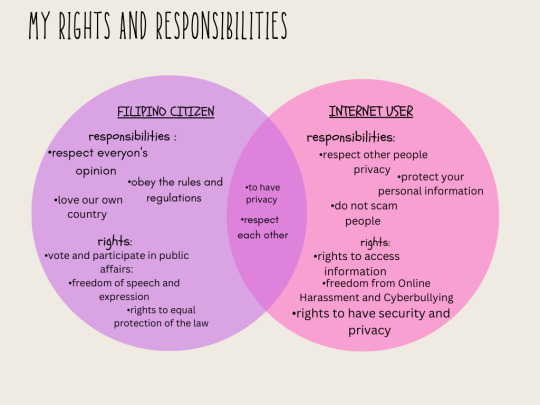
how can you observe social, ethical, and legal responsibilties in the use of technology tools and resources?
Observing social, ethical, and legal responsibilities in the use of technology tools and resources is crucial to ensure the responsible and appropriate application of technology. Here are some guidelines to help you navigate these responsibilities:
1. Social Responsibility:
- Consider the impact of technology on society: Evaluate how technology tools and resources can affect individuals, communities, and society as a whole. Anticipate and mitigate any potential negative consequences.
- Promote digital literacy: Encourage education and awareness about responsible technology use. Help bridge the digital divide by providing access to technology and teaching essential digital skills.
- Foster digital inclusion: Ensure that technology is accessible and available to all individuals, regardless of their socioeconomic background or geographical location.
- Support ethical technology initiatives: Contribute to projects and initiatives that aim to develop and utilize technology for social good, such as using technology to address environmental challenges, promote equality, or enhance healthcare.
2. Ethical Responsibility:
- Consider the ethical implications of emerging technologies: Stay informed about the latest technological advancements and assess their potential ethical implications. Examples include artificial intelligence, machine learning, genetic engineering, and virtual reality.
- Foster transparency and accountability: Advocate for transparency in the development and deployment of technology. Encourage organizations to disclose information about their algorithms, data practices, and decision-making processes.
- Encourage ethical design and development practices: Promote the integration of ethical considerations into the design, development, and deployment of technology. This includes factors such as user privacy, security, and the avoidance of bias and discrimination.
- Engage in ethical data practices: Handle data responsibly, ensuring that it is collected, processed, and stored securely. Use data for legitimate purposes and obtain explicit consent when necessary. Anonymize or de-identify data when possible to protect individual privacy.
3. Legal Responsibility:
- Comply with applicable laws and regulations: Stay updated on the legal requirements related to technology use, including data protection, cybersecurity, intellectual property, and online behavior. Ensure that your actions and use of technology are in accordance with these laws.
- Secure intellectual property rights: Respect intellectual property laws and protect your own intellectual property. Obtain proper licenses, permissions, or copyrights for any content or software you use or distribute.
- Be aware of jurisdictional differences: Recognize that technology-related laws may vary across different countries and jurisdictions. If you operate internationally, familiarize yourself with the legal requirements of the regions you engage with.
By integrating social, ethical, and legal responsibilities into your use of technology, you can contribute to a more responsible and sustainable digital ecosystem.
2 notes
·
View notes
Text
Basic Elements Hyderabad - Simplifying fire!
Basic Elements Solutions Pvt Ltd, headquartered in Hyderabad, was established in 2009. Basic Elements emerged from a vision deeply rooted in the ancient wisdom of panchamahabhuta – the five elements of nature. Just as Earth, Water, Fire, Air, and Space form the core elements of life, we at Basic Elements Hyderabad have integrated these principles into our mission: to channel the power of these elements for fire prevention, protection, and evacuation. With a passion for safeguarding lives and property, we embarked on a journey to redefine fire safety standards.
Our comprehensive range of fire protection services in Hyderabad is designed to safeguard lives and property.
Fire Hydrant System
Facilitate swift fire response with our Fire Hydrant System services. We install and maintain a reliable water supply, featuring strategically placed hydrants connected to top-notch RRL hose reels for effective fire protection

Fire Sprinkler System
Our team specializes in meticulous design and installation, utilizing cutting-edge 3D CAD software to tailor solutions for diverse industries, from residential and educational to industrial and hazardous environments.

Fire Alarm Service
We offer complete solutions: installation, maintenance, servicing, inspection, repair, and AMC services. Our advanced Addressable Fire Alarm Systems provide intelligent detection, and Non-Addressable Systems promptly alert occupants for a swift response to fires.

Fire Safety Inspection Service
Safeguard your property with our Fire Inspection Service. We assess and maintain essential fire safety elements, providing comprehensive solutions from detection systems to equipment maintenance for a secure and compliant environment

Fire Fighting AMC
Ensure uninterrupted safety with our Annual Maintenance Contracts. Our expert team conducts regular check-ups and maintenance, providing comprehensive protection for your fire safety systems and offering you peace of mind

Custom Fire Safety Solutions
Recognizing that each client and property is different, we deliver custom solutions for unique problems. Our approach is personalized, addressing the distinct challenges of your environment and providing effective fire safety measures

1 note
·
View note
Text
Enhancing Efficiency and Accuracy: The Advantages of Drone Surveyors in Coleford
youtube
In today's rapidly evolving world, technological advancements have revolutionized various industries, including surveying. Drone surveyors have emerged as an innovative solution, bringing a multitude of benefits to the field. This article explores how drone surveyors in Coleford, South West, are transforming traditional surveying practices, enhancing efficiency, and delivering accurate results.
Unleashing the Potential of Drone Surveyors Drone surveyors utilize unmanned aerial vehicles (UAVs) equipped with high-resolution cameras and advanced sensors to capture detailed imagery and data of vast areas quickly and efficiently. These cutting-edge devices are particularly beneficial for surveying projects in Coleford's challenging terrains, where conventional surveying methods might face limitations. With their ability to navigate difficult landscapes and reach inaccessible areas, drone surveyors offer a comprehensive and cost-effective solution.
Enhanced Efficiency and Time Savings One of the primary advantages of employing drone surveyors in Coleford is the significant improvement in efficiency and time savings. Traditional surveying methods often require manual labor, extensive equipment setup, and lengthy data collection processes. In contrast, drones can rapidly cover large areas within a short time, eliminating the need for labor-intensive ground surveys. By automating data collection, drone surveyors enable faster project completion, saving both time and resources for clients.
Superior Accuracy and High-Quality Data Accuracy is paramount in surveying, and drone surveyors excel in this aspect. Equipped with advanced imaging technology, drones capture high-resolution aerial images that provide accurate and detailed information for mapping, modeling, and analysis. The collected data can be processed using specialized software to create precise 3D models, topographic maps, and volumetric calculations. By minimizing human error and offering a more comprehensive perspective, drone surveyors deliver reliable and actionable insights to clients in Coleford.
Safety and Environmental Benefits Drone surveyors prioritize safety and reduce risks associated with traditional surveying methods. By replacing the need for personnel to traverse treacherous terrain, drones minimize the chances of accidents and injuries. Additionally, drone surveys minimize disturbance to the environment, as they operate without the need for extensive ground disruption. This environmentally-friendly approach aligns with the growing global emphasis on sustainability and responsible practices. South West Surveys' utilization of drone surveyors in Coleford demonstrates their commitment to both safety and ecological stewardship.
Applications in Various Industries Drone surveyors find applications across diverse industries, further exemplifying their versatility. In construction, drones aid in site analysis, progress monitoring, and quality control. Infrastructure planning benefits from the accurate data provided by drone surveys, assisting in road design, pipeline routing, and urban planning. In agriculture, drones contribute to precision farming, enabling crop health assessments and yield optimization. The renewable energy sector leverages drone surveys for site suitability analysis and maintenance inspections. The possibilities are vast, and drone surveyors are instrumental in delivering efficient and accurate results across multiple sectors.
Conclusion The utilization of drone surveyors in Coleford has revolutionized the field of surveying, enhancing efficiency, accuracy, and safety. South West Surveys' adoption of this cutting-edge technology reflects their commitment to delivering high-quality services. By harnessing the power of drone surveyors, clients in Coleford can expect timely, precise, and cost-effective surveying solutions for their projects.

#Drone Surveyors Coleford#Drone Surveyors Patchway#Drone Surveyors Gloucestershire#Drone Surveyors Gloucester#Drone Surveyors Dursley#Drone Surveyors Kingswood#Drone Surveyors Tetbury#Drone Surveyors Tewkesbury#Drone Surveyors Yate#Drone Surveyors Moreton-in-Marsh#Youtube
2 notes
·
View notes